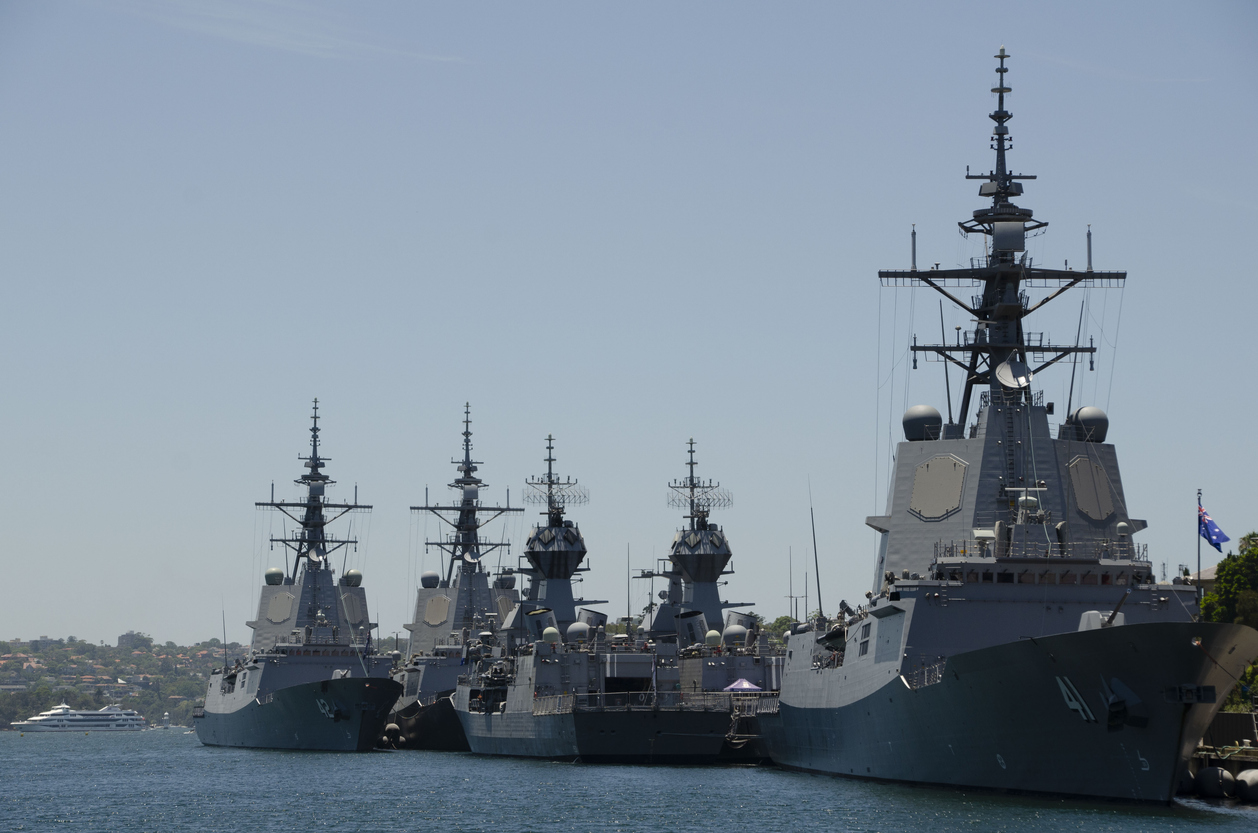There’s a simple solution to the problem of Chinese warships sailing around Australia: a reciprocal agreement – you don’t sail off our coast and we won’t sail off yours.
I have no doubt China would accept and adhere to such a reciprocal agreement. The obstacle is not them. It’s us, Australia, or more precisely the Australian Government.
Australian ships and aircraft, alongside US, Japanese and British ships constantly sail off the Chinese coast. Australian spy planes patrol the South China Sea and our warships sail the region’s international waters, so there’s no breach of international law.
But it is provocative. Australians see this when it’s Chinese ships coming our way.
Our government is well aware of the provocative nature of the exercises. But the general public is oblivious and our mainstream media seems to go out of their way to avoid mention of our provocative activity.
Just like the Chinese, Australian ships engage in live fire exercises.
Our senior former senior naval officers have no hesitation in saying so. Asked on ABC Radio National about the Chinese live fire exercise off our coast, former Chief of Defence, Admiral Chris Barrie, said that as far he could figure it out, the firings were conducted on the high seas.
“It’s perfectly legitimate behaviour under international law. It’s something that we ourselves do and I’ve done. …. It’s almost none of our business provided it’s conducted on the high seas,” he said.
Admiral Barrie said he had conducted live-fire drills at sea where there were air routes above. He made sure there were no aircraft in the vicinity and used the aviation guard frequency to warn off any aircraft that might not have been detected.
Deputy Prime Minister and Defence Minister, Richard Marles, also drew attention to international law, saying that he was advised that the Chinese task group was complying with international law and “why that matters is because there’s actually a greater frequency of Australian naval vessels closer to China than there are Chinese vessels closer to Australia”.
Naval live-fire exercises range from test firing of the various guns aboard a vessel, to missile and torpedo firings.
Despite the hysterical reaction of the Australian media, it is far from clear that the Chinese warships fired anything that would have endangered a commercial airliner flying at 30,000 feet.
You can readily see why the government played down the Chinese firing, when you see what Australia and the US do.
The US is far from shy about its activities. You can find live fire exercises on YouTube.
The British happily join in China-baiting, sailing one of their only two aircraft carriers with a fleet of US and European warship to the far off South China Sea.
And in the past the Canadians have joined the show, although we don’t know if this fond friendship still exists.
According to the US Naval Institute News, in May last year Australia joined the US and the Philippines in an exercise in the South China Sea where they used an anti-ship cruise missile to sink a decommissioned tanker, the Lake Caliraya. The ship “slipped beneath the waves after being hit by missiles, bombs and artillery shells for two hours at 10:59 Philippine Standard Time”.
All this manoeuvring is done in the name of “Freedom of Navigation” even though everyone knows that the Chinese have not the slightest interest in preventing commercial shipping from sailing the South China seas. Why would they? The vast majority of the trade is to and from China.
But such manoeuvring could result in a serious incident. Collisions between US warships and other shipping have occurred in the past. In 2017, the USS Fitzgerald and a Philippine-flagged merchant vessel, the ACX Crystal, collided south of Tokyo Bay in the East China Sea, killing seven US sailors. Australians will also well remember the June 1969 tragedy when the USS Frank E Evans crossed the bow of the aircraft-carrier Melbourne during a training exercise in the South China Sea.
The election of Donald Trump and the hysteria generated by the Australian media over the Chinese ships’ circumnavigation of the continent have predicably led to calls for increased defence spending.
It never seems to cross the mind of those in power that winding down tensions might be a better way to go. Rather than spend hundreds of billions buying three to five US-built nuclear-powered submarines and then a British-built submarine, Australia could redirect spending to economy-building, Australian projects.
The need for a more independent stance is surely becoming obvious to all as Trump demonstrates just how unreliable an ally the US is.
Paying the Americans to build subs in America contributes nothing positive to the Australian economy. The payments simply increase our debt and worsen our balance of payments. For a fraction of the cost we could manufacturing more drones or missiles in Australia. This would not only add to Australia’s defence capability but provide jobs and generates knowledge.
Defence spending at home produces jobs in the production of the weapons. But it does not produce an ongoing productive legacy. It does not add to the productive capacity of the economy. In contrast, expenditure on railways, roads and bridges, communications networks, education and research and development, boost the economy. Improvements to the transport network assist all who use the network.
There are many non-defence spending options that would strengthen our position. For example, it’s estimated that 91% of transport fleet fuel is imported. Rather than acquire subs to supposedly protect the shipping lanes carrying this fuel, we could redirect spending to an inspirational project: the total electrification of our transport fleet. Fuel imports would drop dramatically, we would be more self-reliant, and new companies and jobs would be created.
It’s long been recognised that excessive defence spending can actually weaken an economy. (This was well document by Yale University Professor Paul Kennedy in his ground-breaking book of the 1980s, The Rise and Fall of the Great Powers.) It is no coincidence that Japan and Germany grew rapidly after the war when both were restricted in their defence spending. They put their funds into productive investment and prospered.
In contrast, the US poured billions into fighting in Vietnam and its economy crashed in stagflation. The Soviet Union was broken as it tried to match US military expenditure.
Now with weak economies, the Europeans have decided to increase defence spending – an action that might provide a short-term economic boost, but in the long term will overstretch them and weaken their relative position in the world.
The views expressed are solely those of the author and may or may not reflect those of Pearls and Irritations.
Paul Malone is a journalist with over 40 years experience, having worked for the Sydney Morning Herald, The Age, The Australian Financial Review and the Canberra Times. He is a former Board member of the National Press Club; a former Treasurer of the Australian Journalists Association (ACT) Branch; and a former member of the Federal Parliamentary Press Gallery Committee.
Paul Malone has a long-running interest in Borneo. His book The Peaceful People: The Penan and their fight for the forest was published in 2014 by Gerakbudaya, Malaysia.

